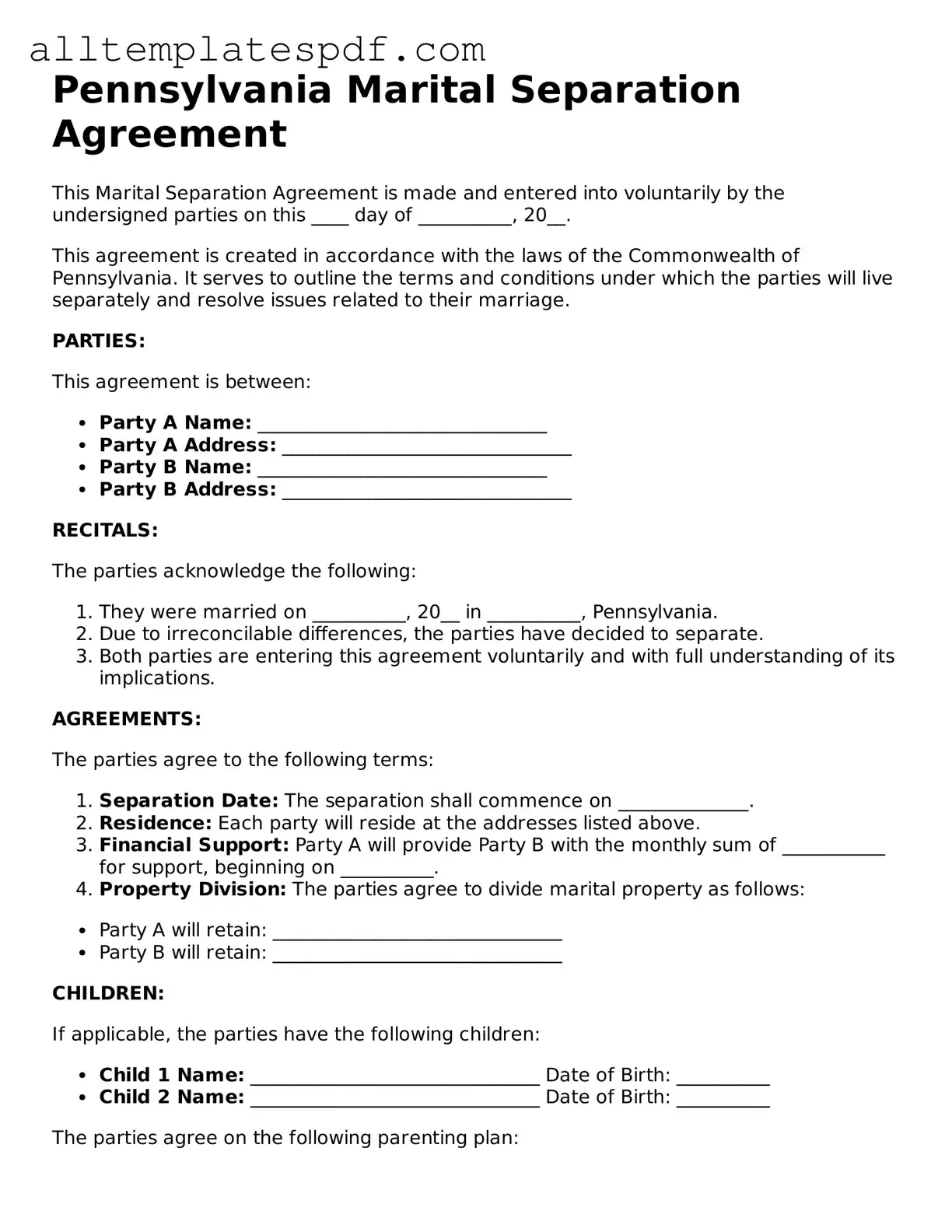Filling out the Pennsylvania Marital Separation Agreement form can be a daunting task, and many individuals inadvertently make mistakes that could have lasting implications. One common error is failing to provide accurate information about assets and debts. When parties do not fully disclose their financial situation, it can lead to disputes later on. It is essential to list all properties, bank accounts, and debts comprehensively to ensure a fair separation.
Another mistake often seen is neglecting to include specific terms regarding child custody and support. In cases where children are involved, the agreement should outline who will have primary custody, visitation rights, and how child support will be calculated. Vague language or missing details can create confusion and lead to conflicts down the line.
People sometimes overlook the importance of having both parties sign the agreement. An unsigned document holds no legal weight. It is crucial for both spouses to not only sign but also date the agreement to validate its terms. This simple step is often forgotten but is vital for the enforceability of the agreement.
Additionally, some individuals fail to consider tax implications when drafting their agreement. For instance, the division of assets can have significant tax consequences that may not be immediately apparent. Consulting with a financial advisor or tax professional can help clarify these issues and prevent future financial surprises.
Another frequent error is not reviewing the agreement thoroughly before submission. Rushing through the process can lead to overlooked details or errors in the language used. Taking the time to read through the document carefully can prevent misunderstandings and ensure that both parties are on the same page.
Moreover, individuals sometimes forget to account for future changes in circumstances. Life is unpredictable, and what works today may not be suitable in the future. Including a clause that allows for modifications to the agreement can provide flexibility and peace of mind for both parties.
Lastly, many people underestimate the value of legal advice. While it might seem tempting to fill out the form without professional help, consulting with a lawyer can provide invaluable insights. A legal expert can help identify potential pitfalls and ensure that the agreement complies with Pennsylvania laws, ultimately safeguarding both parties' interests.
